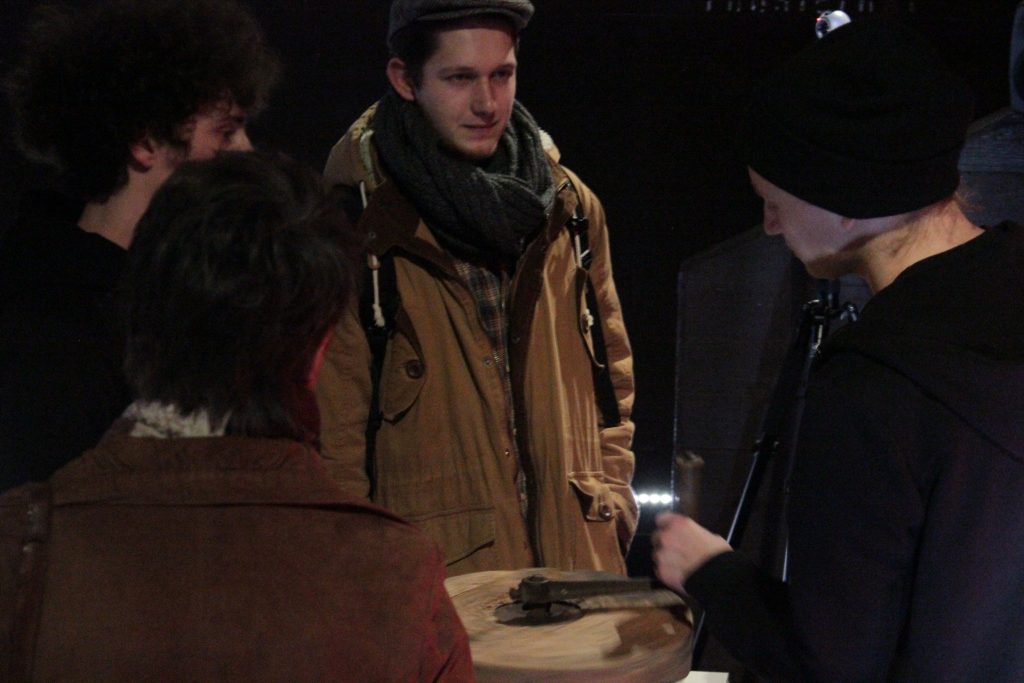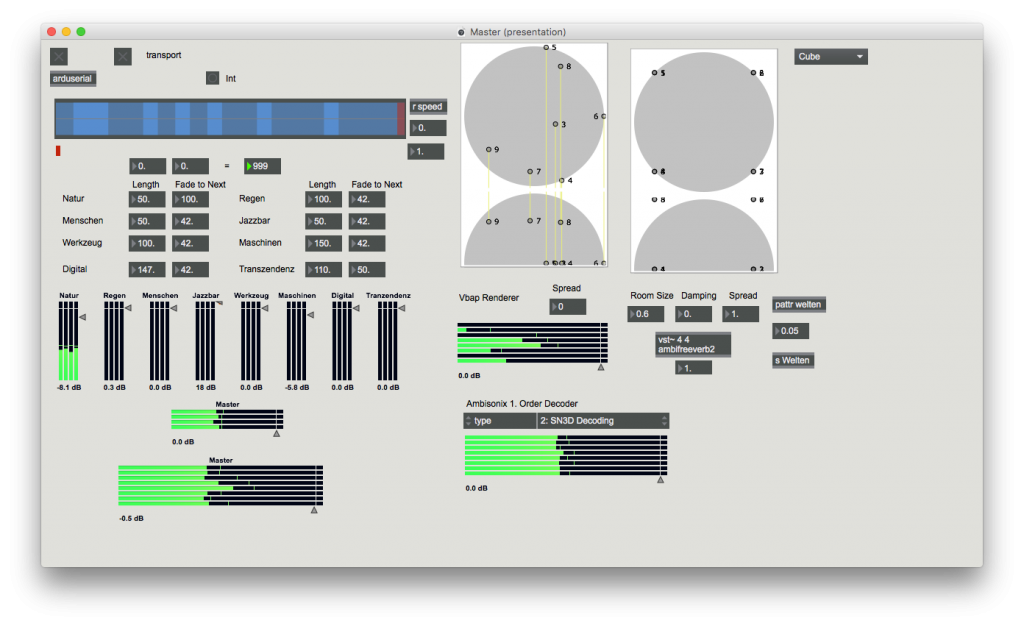
„Impetus“ is an interactive spatial audio installation for 8-channel 3D loudspeaker cube or a binaural headphone system with head tracking.
It concerns itself with the way mankind constantly shapes its environment after its wishes and how constant work is needed to keep it this way. The turning of a crank as the interactive element powers a development of the auditory environment from a primal state of nature to the digital sounds of today and beyond. If the visitor stops exerting this work, the auditory environment returns to its natural state.

The logic of the installation is implemented in the graphical programming environ- ment Max/MSP. Tracking technology plays a huge part in VR applications and is therefore of very high quality in these systems. For this reason the HTC VIVE tracking system is used for the binaural system, with the game engine Unity acting as a host. Binaural rendering is implemented with the Oculus Spatializer plugin. For the loudspeaker system a mix of vector based amplitude panning and first order ambisonics is implemented using the ICST Ambisonics externals for Max/MSP and the vbap max object designed by VILLE PULKKI.
The Thesis
The installation was created as part of my bachelor thesis:
Konzeption und Umsetzung der interaktiven Raumklanginstallation „Impetus“
Evaluierung eines „head-tracking“ gestützten binauralen Kopfhörersystems als Alternative zu etablierten Multikanal Spatial Audio Systemen
Usually a sound installation is presented through the use of a multichannel loudspeaker setup. Using a binaural headphone system with head tracking capabilities, as it is often used in virtual reality games and experiences, could however bring significant advantages in terms of portability, technical requirements and requirements for the location of the exhibition.
In order to examine if both of these systems can offer the same level of immersion, and bring the same feeling of presence to visitors, a test group of 20 people was presented with both implementations. 12 subjects had a background in audio engineering while 8 had not. Afterwards their experiences were captured using semi-structured interviews.
All of the 20 test subjects stated a higher emotional impact of the loudspeaker system. While the perception of the this system differed only slightly between the two different groups, strong differences in the perception of the headphone system could be discovered between all subjects.